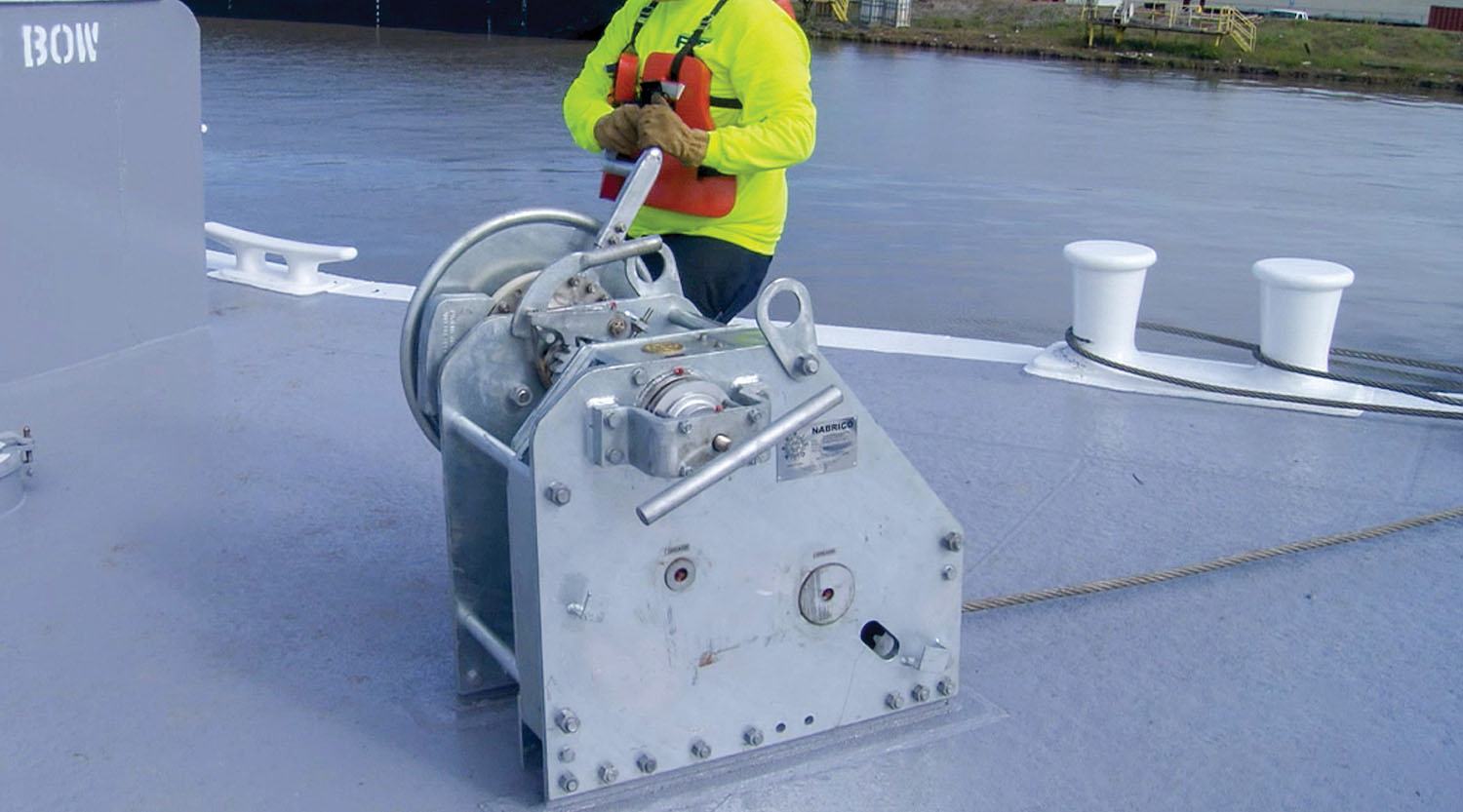Great ideas can come from anywhere.
A field team member’s understanding of the physical exertion required to operate a ratchet handle, while seeing value in the older, spoked, hand wheel configuration brought about an innovation and new standard of safety to the market, Nabrico’s FASST Winder Winch.
Rather than using a ratchet handle, the winch incorporates both a handle and a foot pedal at the right location to maximize return on energy, harnessing the unused power of the operator’s arms and legs as well as gravity, according to Nabrico. The result is a winch that takes the stress off the operator’s back and shoulders by engaging the leg muscles in the process.
The design resists an operator’s performance weakening over time due to natural fatigue. When faced with elements like heat or rain, the energy saved also provides a safer, more productive work environment for the operator.
Nabrico said the FASST Winder also helps to reduce injuries.
A third-party report showed the FASST Winder’s new design allows for more than a 50 percent reduction in force required to operate the winch. It allows four times less back stress and reduces shoulder stress by half, compared to the ratchet model.
The FASST Winder’s simple design reduces the risk of injury through key factors. There is no cheater pipe, ratchet extension handle, or “Johnny bar.” Instead, adequate cable tension can be generated with the newly designed handle and foot petal. Also, it can be operated with four points of contact, using both hands on the handle, one foot on the barge surface and one foot on the pedal.
As the FASST Winder nears three years on the market, NABRICO has seen first-hand how the new design is improving the work environment for operators. Nabrico Vice President and General Manager Clint Bryan recalled his most memorable sales call.
“Our best sales call happened when we arrived at a customer’s place and showed the FASST system installed on a barge winch connected to another ratcheted barge winch,” he said. “We had a small, skeptical crowd of four to five people. After a couple of minutes, many of them stepped away and got on their phones. (We are used to that; these people are busy!) Next thing you know, there are 20 people there, and one of them was showing the winch off for us. We just stood there and watched. It was better than we hoped for.”




